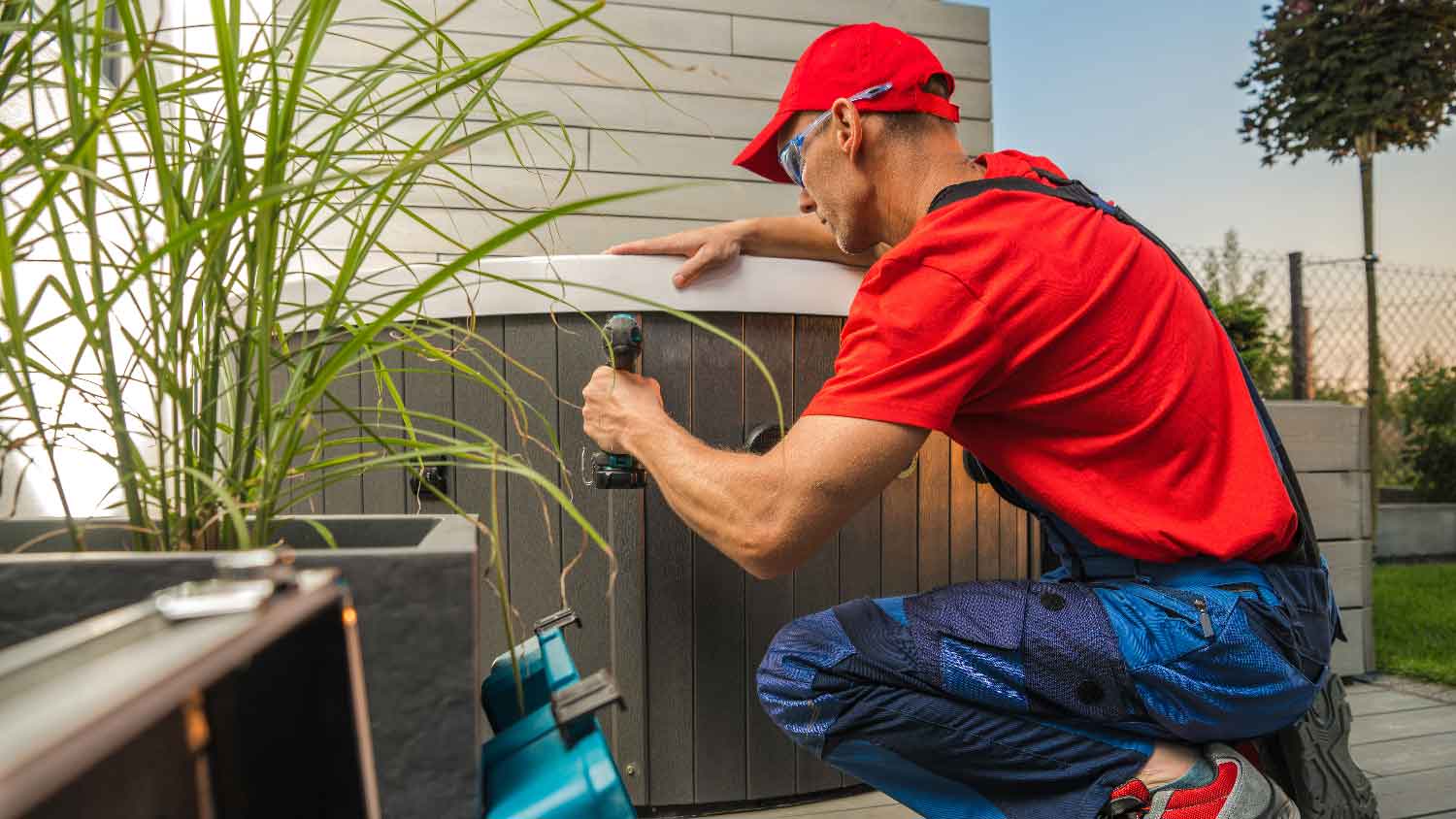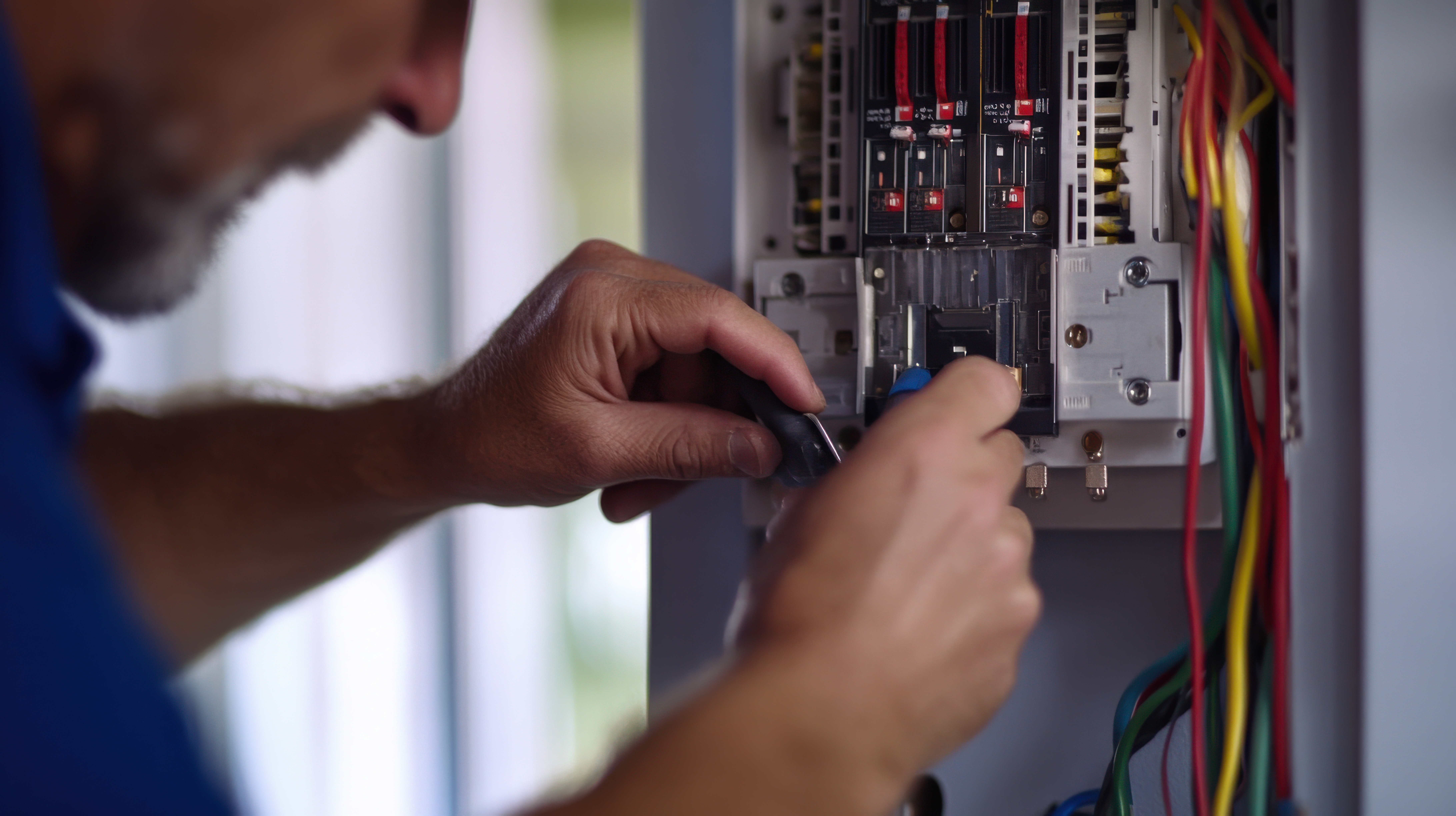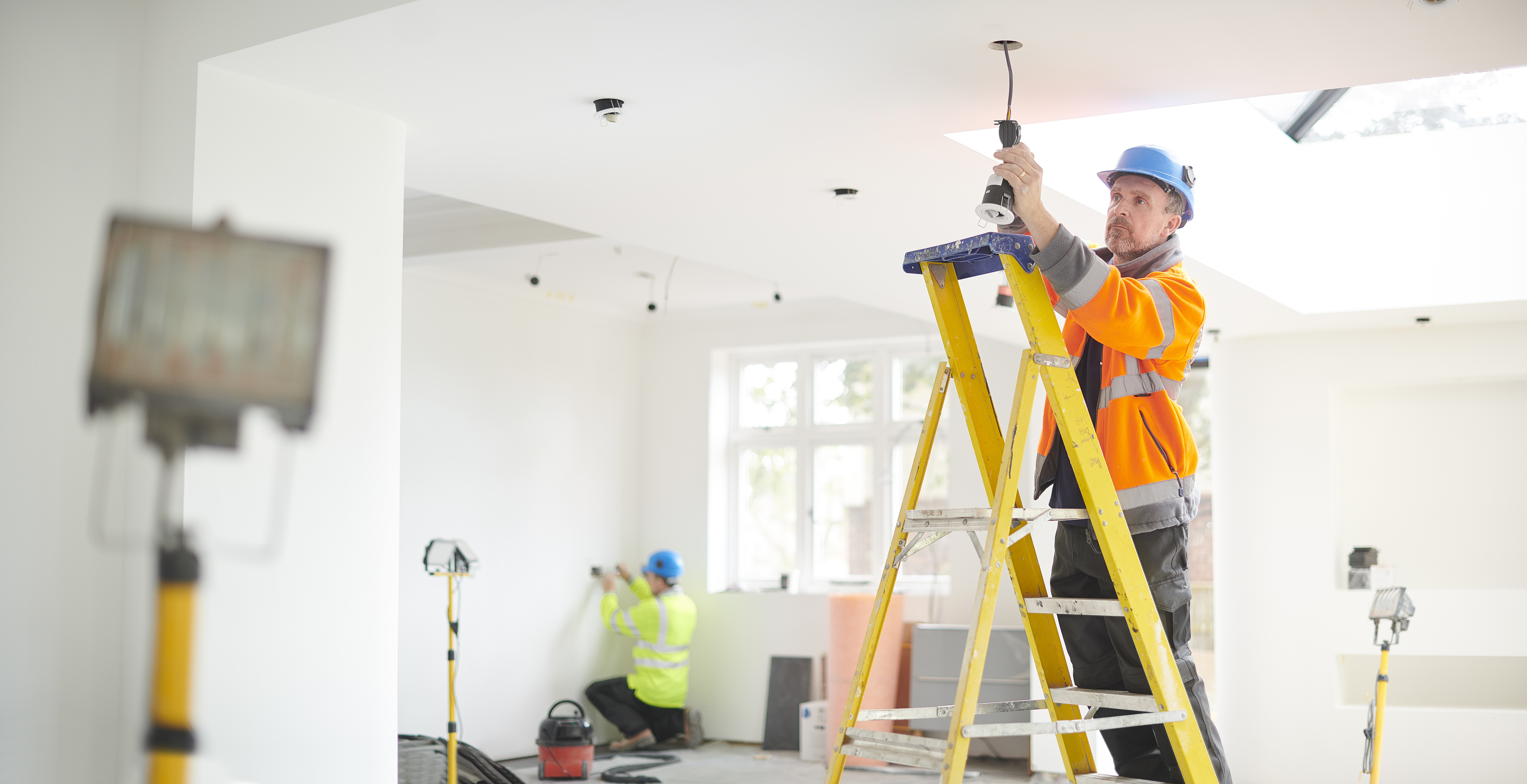
How much does it cost to add an electrical outlet in Atlanta? Learn about average prices, local permits, and what impacts the cost in the Atlanta area.
Get clued in on hot tub electrical requirements


Traditional hot tubs run on 240 volts and require hard-wiring into a dedicated circuit.
Plug-and-play hot tubs run on 120 volts and require GFCI-protected outlets.
Hot tub electrical work must meet National Electric Code and local code requirements.
Skip the DIY and hire an experienced licensed electrician to do the job.
You may be excited about a new hot tub, but before you get too far into the process, you should learn about hot tub electrical requirements. A licensed electrician will do all the heavy lifting for you, but understanding the basics will help you choose between traditional and plug-and-play hot tub types. Plus, you will see why it is important to skip the DIY and hire a pro for this job.
There are two types of hot tubs: traditional and plug-and-play. The process of installing a hot tub looks a lot different depending on the tub type, since they have different sets of electrical requirements.
| Traditional Hot Tub | Plug-and-Play Hot Tub |
|---|---|
| Hard-wired | Plugs into an outlet |
| 220 or 240 volts | 120 volts |
| GFCI breaker required | GFCI outlet required |
Wiring a hot tub is not a job for DIYers. There are too many risks when working with electricity around water. By handing off the job to a pro, you can rest assured that your electrical work will meet all the standards required by the National Electrical Code (NEC) and local building codes.
Almost all hot tub companies will deliver a new hot tub to your home, but it is up to you to hire a licensed electrician to complete the electrical installation. Some general electrical requirements that apply to all types of hot tubs include:
Locating it at least 10 feet away from overhead power lines
All wires, switches, outlets, and junction boxes located at least five feet away from the spa
Outdoor outlets should have covers.
Spa lights running on a dedicated GFCI circuit
Professional inspection before turning on your hot tub for the first time
Traditional hot tub electrical wiring is more complex than plug-and-play ones since they draw more electricity. These tubs are more reliable, durable, and can accommodate more people. Traditional spas also heat faster and have more powerful jets. For some people, this is the best tub option for maximizing all of the hot tub benefits.
Here are the most important electrical requirements for traditional tubs.
Unlike a plug-and-play tub that has an electrical plug, a traditional hot tub does not have a plug. Instead, an electrician will hard-wire the tub into your home’s electrical system. Besides hot tubs, it is typical for electricians to hard-wire other high-amperage appliances like ovens and dishwashers. Hard-wiring your hot tub ensures a permanent, reliable, and stable connection.
Check the owner’s manual or ask the hot tub manufacturer what amperage your hot tub needs. It will typically require 50 to 60 amps, depending on tub size, heater size, and the number of pumps.
Note that homes have 100- to 200-amp service, and that is typically good enough for a new hot tub installation; however, if your home is over 40 years old, you may need to upgrade the electrical panel before you can install a hot tub.
Additionally, your hot tub needs to run on a dedicated circuit. This means that you cannot plug any other appliances into the circuit.
GFCI stands for Ground Fault Circuit Interrupter. There are GFCI outlets and GFCI breakers, and you will need the latter for a traditional hot tub. These breakers have a very important job of reducing electrocution risks.
While regular breakers and outlets always offer a steady stream of electricity, GFCI-protected breakers and outlets monitor the flow of electricity. If any changes in the flow of electricity between the hot and neutral wires are detected, the breaker shuts off power in one-thirtieth of a second.
To understand this better, let’s say you have spa lights on a dedicated GFCI-protected circuit. If the spa lights malfunction while you are sitting in the tub, you are at risk of electrocution; however, a properly working GFCI breaker will detect the electrical changes and immediately shut off power to the lights.
In a traditional hot tub, the GFCI breaker will keep you safe in case of things like circuit overload, damaged wires, or moisture getting on the wires.

Modern hot tubs from the past 25 years require a four-wire installation with two hot wires, one neutral wire, and one ground wire. The required wire gauges for your hot tub will either be six or eight gauges. Check the owner’s manual for the exact requirements.
The spa panel, also called the manual disconnect device, allows you to turn off power quickly to the hot tub whenever necessary. It will also prevent false tripping. The panel needs GFCI protection and is usually placed five to 10 feet away from the tub, but also within view of the hot tub user.
Plug-and-play hot tubs get their namesake because they are powered with a standard plug. So, instead of hiring an electrician to hard-wire your tub into the electrical system, you can use a GFCI outlet or an outlet on a GFCI breaker. Do not plug other appliances into the same outlet, and make sure the outlet is at least five feet away from the water’s edge.
It is also important never to plug your hot tub into an extension cord. This is a fire hazard, and it will void the manufacturer’s warranty.
Even if you already have a GFCI outlet ready to go for your new tub, you should get an electrical inspection before using it. An electrician can check that the outlet and circuit are in good working order so you do not have to worry about any electrical problems. They can also help point out any code violations that you may have missed. After all, electrical codes are complex and constantly changing.
Here are some precautions you should take when using your hot tub:
Never use an extension cord to charge your phone near the tub.
Avoid using electronics while in the tub, including your phone.
Stay out of the tub during heavy storms, windstorms, thunderstorms, and lightning storms.
Never use electrical appliances of any type near your tub, including stereos (unless battery operated).
Test your GFCI outlets and breakers monthly.
When you are preparing to hire an electrician for hot tub electrical installation, you should look for a licensed professional with extensive experience working with pools and spas. If you are buying a hot tub from a local store, you can ask them for a list of their recommended electricians.
When planning for hot tub costs, you should plan for hot tub electrical installation costs to range between $600 and $2,200. These costs depend largely on the amperage of your hot tub. If you only need a GFCI outlet installation, that will run between $130 and $300.
Additionally, an electrical panel upgrade costs $1,200 to $2,000. This only applies if you need to upgrade to a 100- or 200-amp service.
From average costs to expert advice, get all the answers you need to get your job done.

How much does it cost to add an electrical outlet in Atlanta? Learn about average prices, local permits, and what impacts the cost in the Atlanta area.

How much does an electrical box replacement cost in Atlanta? Learn what affects the price and how much you can expect to pay.

Wondering what rewiring a house costs in Atlanta? Find out what drives the price and how to plan for this important electrical upgrade in your area.

Today’s polarized plugs and outlets have a hot and neutral side, which is important for any receptacle wiring. Here’s what that means, why it happened, and how to take advantage of it.

There are a host of reasons why your circuit breaker switch won’t stay on. Troubleshoot to find out if you can fix it yourself or need to call the pros.

Learn how to install a C-wire as part of your smart thermostat installation and discover other options that may work for your HVAC wiring.